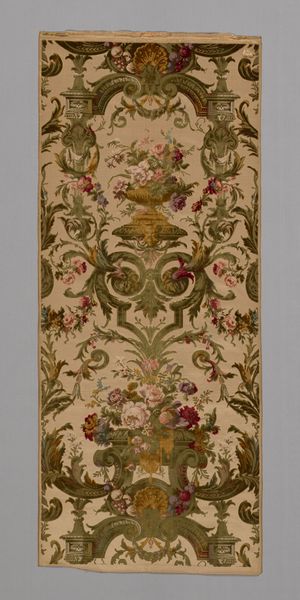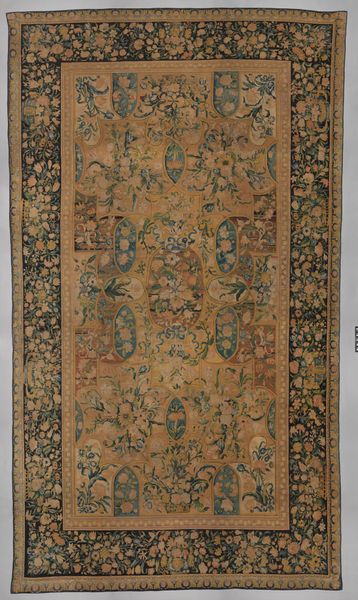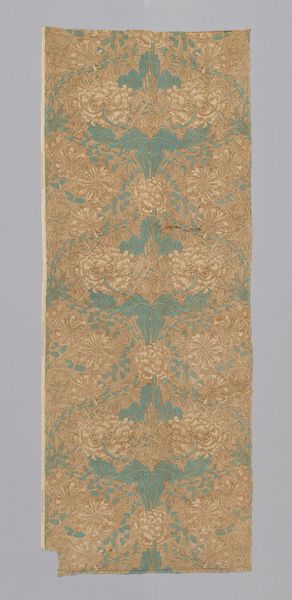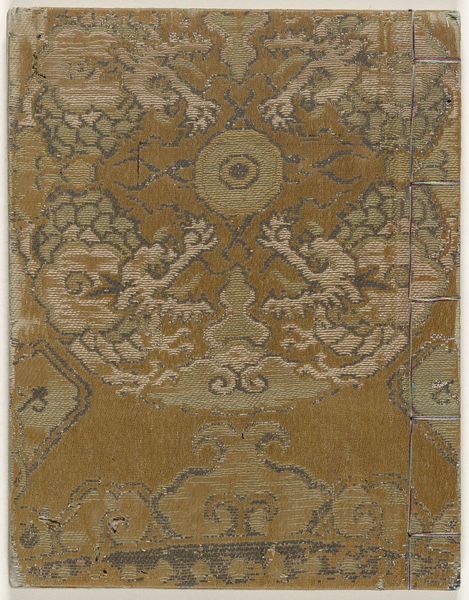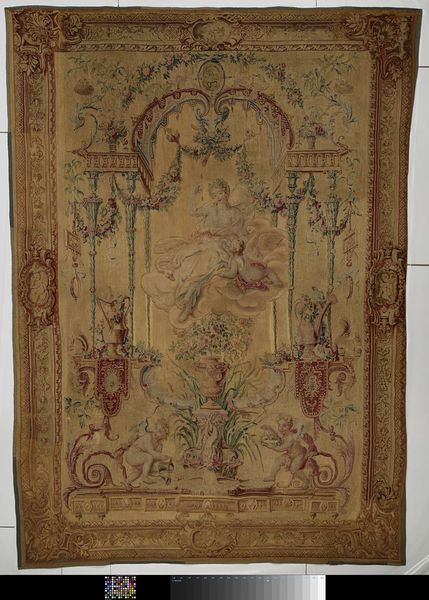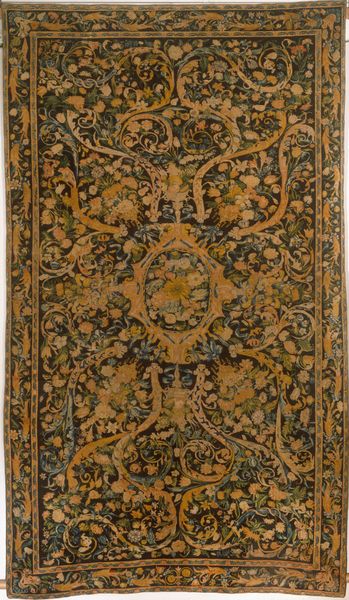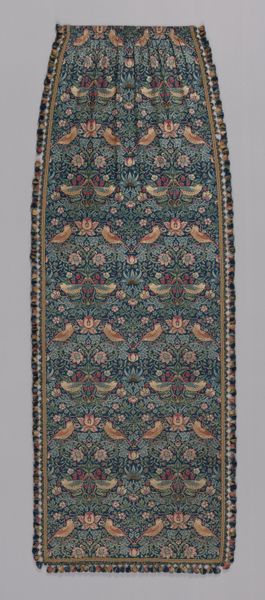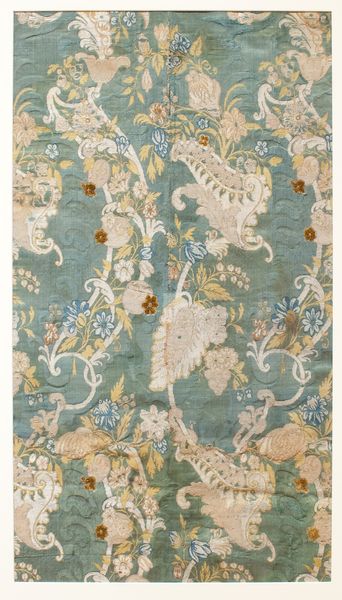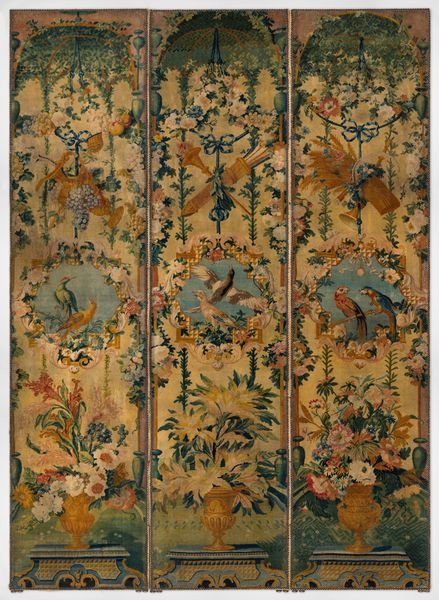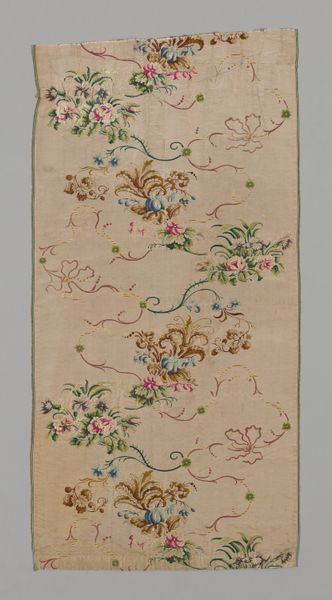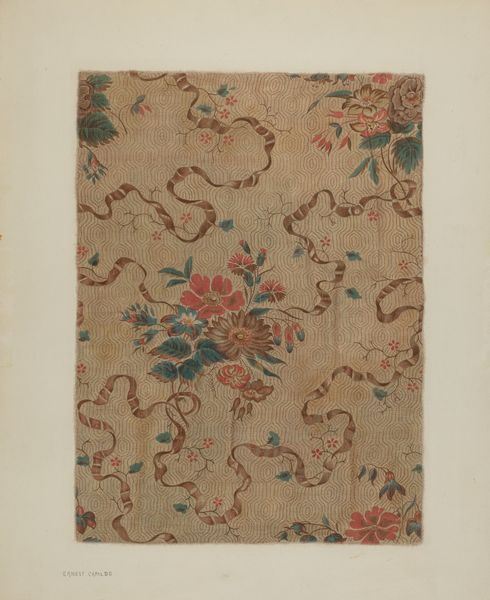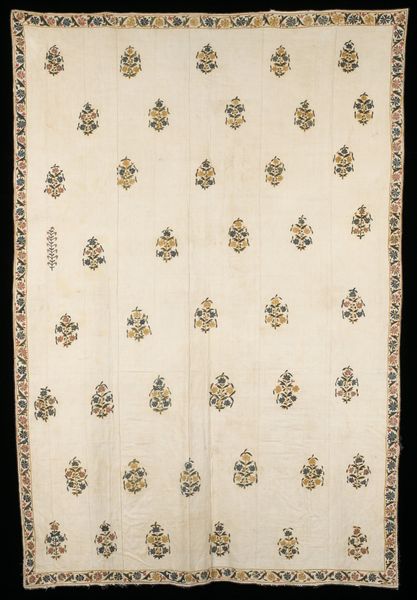
silk, weaving, textile
#
silk
#
pattern
#
asian-art
#
weaving
#
decorative
#
textile
#
orientalism
#
china
#
decorative-art
#
decorative art
Dimensions: 167 × 73.8 cm (65 3/4 × 29 in.)
Copyright: Public Domain
Editor: So, this textile panel, simply called "Panel", is from China, dating sometime between 1644 and 1911, made of silk. The overall feeling I get is elegance. The repeated patterns seem so delicate. What symbolic weight might these images have carried? Curator: Ah, yes. A beautiful example of applied art! The symbols woven into this panel speak volumes, resonating deeply within Chinese cultural memory. The flowers, for instance – do you notice which ones are most prominent? Editor: Peonies, I think. And are those magpies? Curator: Indeed. Peonies have long been associated with wealth and honor, especially during the Qing dynasty. The magpie, joy and happiness. How do you think these images, juxtaposed, would function psychologically for someone within that culture? Editor: Well, they would likely evoke feelings of aspiration, the hope for a life filled with both material comfort and emotional fulfillment. A potent combination. Does the pattern itself signify something? Curator: The very act of repetition lends weight. It’s a reinforcement of these desires, these values, woven into the fabric of daily life. Each viewing serves as a kind of affirmation. It could serve as a talisman. Editor: So, it’s not just a pretty decoration, it’s actively shaping perceptions. I hadn't thought about decorative arts operating in that way. Curator: Precisely. These aren't just decorations; they’re carefully constructed visual statements that play a role in cultural cohesion and even psychological well-being. These symbols have been used in other decorative artwork and cultural garments throughout history and in modernity as well. It's not a passing trend, rather, it is a lasting signifier. Editor: That gives me a completely new perspective on the power of these recurring symbols in the textile and how to evaluate other art that is similar. Thanks! Curator: My pleasure. It’s through understanding these visual languages that we can truly appreciate the depth of cultural expression.
Comments
No comments
Be the first to comment and join the conversation on the ultimate creative platform.
